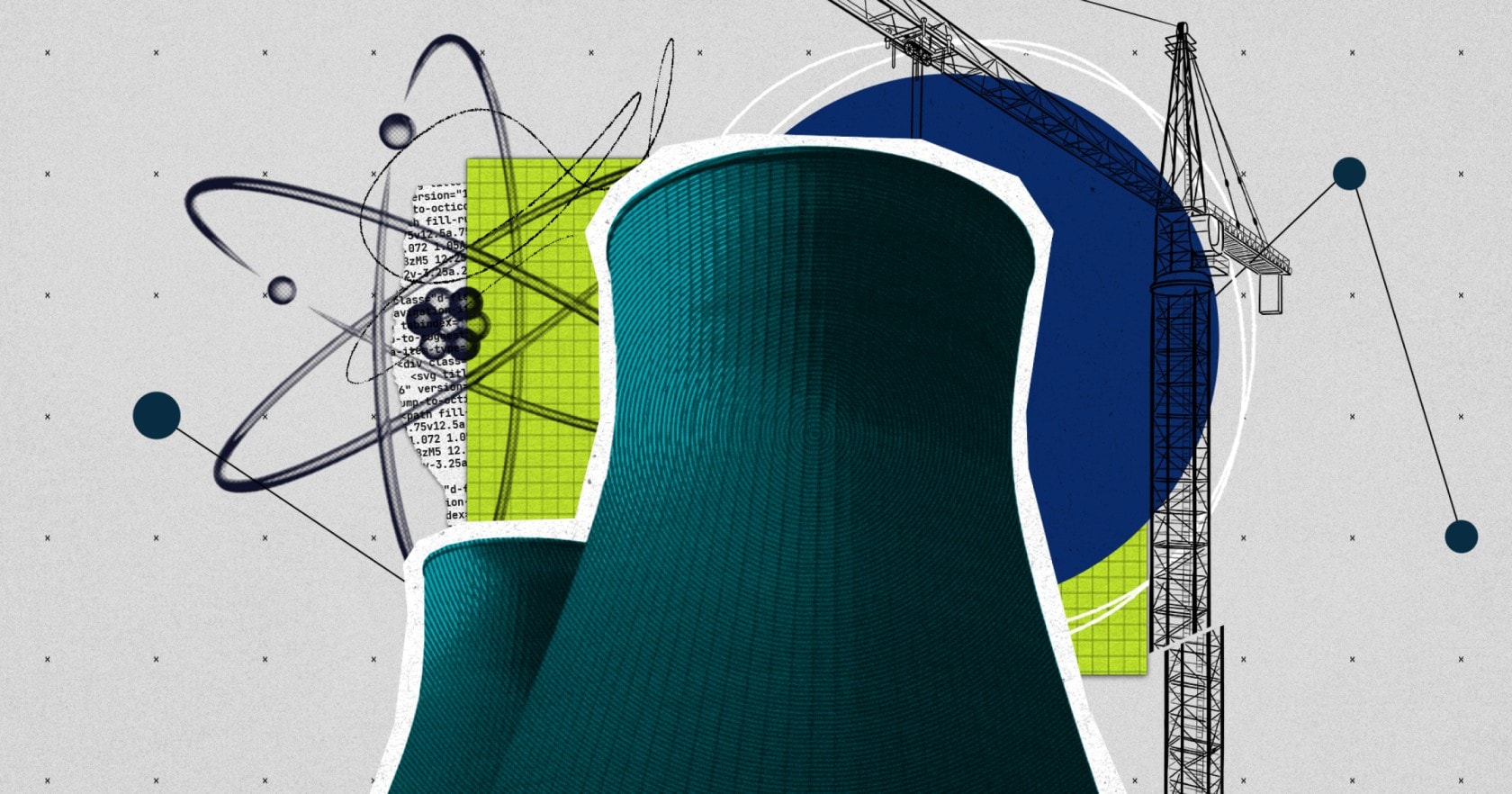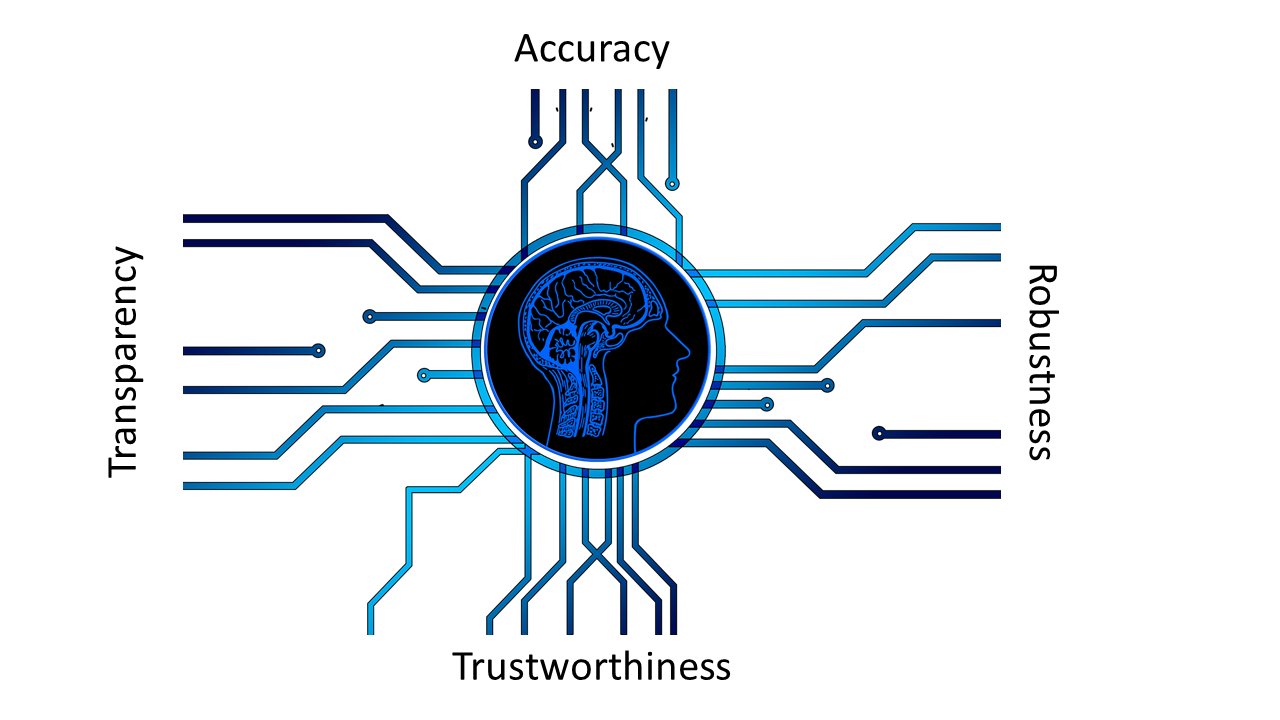Harnessing Nuclear Energy and Crypto AI: The Future of Power and Innovation
How can nuclear energy revolutionize cryptocurrency mining and AI operations? The intersection of nuclear energy and crypto AI offers a unique opportunity to meet rising energy demands with a stable, low-carbon power source. This article explores how nuclear energy can provide reliable electricity for data centers and cryptomining operations, presents case studies of tech companies investing in this technology, and examines the economic feasibility and environmental impact of this innovative approach.
Key Takeaways
- The integration of nuclear energy and AI in cryptocurrency mining offers a sustainable solution to meet the rising energy demands of the tech industry.
- Small Modular Reactors (SMRs) provide a flexible and efficient power supply option for energy-intensive operations, while advancements in nuclear technology improve safety and waste management.
- Leading tech companies are investing in nuclear power to reduce emissions and ensure a reliable energy source for their data centers and cryptomining activities.
The Intersection of Nuclear Energy and Crypto AI

The convergence of nuclear power and artificial intelligence in cryptocurrency mining presents a unique opportunity for sustainable energy solutions. Nuclear energy is appealing to tech giants due to its low carbon emissions, aligning perfectly with their sustainability goals. Unlike renewable energy sources such as wind and solar, which are intermittent, nuclear power provides a stable energy supply, crucial for the continuous operation of energy-intensive data centers.
Imagine the vast power data centers of Microsoft and Google, each requiring a steady stream of electricity to keep their servers running 24/7. These centers not only support search engines and cloud services but also the complex AI models that power everything from virtual assistants to recommendation algorithms. Nuclear power’s stability and reliability ideally match these demands, preventing any interruptions in service.
Moreover, the fusion of nuclear power with AI-driven cryptomining is not just a theoretical concept but a practical, forward-thinking approach to energy management. This synergy could redefine how we think about energy production and consumption, setting a new standard for efficiency and sustainability in the tech industry.
Rising Energy Demands of AI and Cryptomining
As the world of artificial intelligence grows exponentially, so does the demand for energy. AI models, such as those used in ChatGPT, can require up to 80 gigawatt hours of electricity daily. Energy consumption from AI servers could skyrocket to between 85 and 134 terawatt hours annually by 2027. This staggering rise in energy demands is driven by the need to process vast amounts of data and perform complex computations, essential for training and running AI models.
Cryptomining, particularly bitcoin mining, is another energy-intensive process. Bitcoin mining alone consumes around 112.31 terawatt hours per year, a figure comparable to the annual energy needs of the Netherlands. The cooling requirements for these operations are also significant, with bitcoin mining water consumption projected to exceed 2,200 gigaliters in 2023. As bitcoin miners consolidate, reducing from 900 companies to around 300, the industry is increasingly turning to renewable energy sources to meet its needs.
Despite the push towards renewable energy, most of the energy used for AI data centers still comes from fossil fuels. This reliance on non-renewable energy sources is unsustainable long-term, highlighting the urgent need for more reliable and environmentally friendly alternatives.
With its capacity to provide a constant and substantial energy supply, nuclear power emerges as a viable solution to rising nuclear power supply and energy demand.
Nuclear Power: A Viable Solution for Energy-Intensive Industries

Nuclear power stands out as a significant player in meeting the high energy demands of industries like data centers and cryptomining. Nuclear energy emits no greenhouse gases and is far more efficient than traditional fossil fuels. It can produce significant amounts of low-carbon electricity, making it an ideal candidate for powering data centers that are the backbone of AI operations.
Nuclear fusion energy is also being explored as a long-term solution. This breakthrough technology could provide almost limitless, carbon-free electricity with no long-lived radioactive waste.
Companies like Microsoft are exploring small modular reactors (SMRs) to power their data centers, aiming to reduce carbon emissions and ensure a stable energy supply. Integrating AI with digital simulations of nuclear facilities can enhance operational efficiency and reduce maintenance expenses, further cementing nuclear power’s role in the future of energy.
Benefits of Small Modular Reactors (SMRs)
Small Modular Reactors (SMRs) represent a game-changer in the nuclear industry. These reactors are smaller and can be installed in locations unsuitable for larger reactors, offering unmatched versatility. Their modular design allows for factory assembly and easier transportation, significantly reducing construction times and costs.
SMRs provide a flexible and scalable power solution, tailored for contemporary energy demands. Some SMRs can operate for up to 30 years without needing refueling, which means fewer operational interruptions and more consistent power supply for industries that require a stable energy source. Innovations like these are crucial for tech companies looking to invest in clean and reliable energy sources.
Addressing Safety and Waste Concerns
Safety and waste management are significant concerns when it comes to nuclear energy. However, advancements in nuclear technology aim to enhance safety and efficiency in power generation. The development of accident-tolerant fuels is a promising avenue for making nuclear power even safer. These fuels are designed to withstand extreme conditions, reducing the risk of accidents.
Spent radioactive fuel rods are strictly regulated, requiring on-site storage and continuous monitoring for safety. These rods must be re-licensed every 20 years to comply with safety standards and regulations. Such measures ensure that nuclear facilities remain safe and environmentally friendly, addressing the primary concerns associated with nuclear energy.
Case Studies: Tech Companies Investing in Nuclear Energy

The increasing energy demands of AI and data centers have led tech companies to explore nuclear energy as a viable solution. Major players like Amazon, Microsoft, and Alphabet are actively investing in nuclear power to meet their energy needs. Amazon, for example, has acquired a nuclear-powered data center in Pennsylvania, which is expected to generate up to 960 megawatts of electricity.
Another notable example is Oklo, backed by OpenAI CEO Sam Altman, planning to provide nuclear power capacity of 100 megawatts for AI operations in partnership with Wyoming Hyperscale. These investments underscore the growing recognition of nuclear energy’s potential to meet tech companies’ high energy demands while addressing environmental concerns.
Using nuclear energy can cut emissions and make the transition to net zero cheaper, providing a cleaner and more sustainable power source for tech giants. These case studies offer a glimpse into the future, where nuclear-powered data centers and cryptomining operations could become the norm.
Economic Feasibility of Nuclear-Powered Cryptomining

The economic feasibility of using nuclear power for cryptomining is a topic of much interest. The Levelized Cost Of Energy (LCOE) for newly constructed nuclear reactors is estimated between 59 and 110 USD/MWh, influencing the profitability of cryptomining projects. While nuclear-powered cryptomining can generate significant revenue, the profitability is highly sensitive to variations in cryptocurrency prices and the lifespan of mining hardware.
In some scenarios, using nuclear energy for cryptomining can produce enough revenue to cover energy generation costs and even turn a profit. However, the economic analysis of such projects often incorporates revenue from both cryptomining and selling excess energy to the grid. This dual revenue stream can boost the financial viability of nuclear-powered cryptomining operations, making them more attractive to investors.
Environmental Impact: Reducing Greenhouse Gas Emissions
A compelling argument for using nuclear power in cryptomining is its potential to significantly reduce greenhouse gas emissions. Nuclear energy produces minimal direct greenhouse gases, making it a cleaner alternative to fossil fuel-based electricity generation. The lifecycle emissions of nuclear energy are significantly lower than those associated with fossil fuels.
Integrating cryptomining operations with nuclear plants helps manage load following by utilizing excess energy during peak production hours. This approach not only optimizes the use of nuclear power but also contributes to a more balanced and sustainable energy grid.
The environmental benefits of this integration are clear, offering a path towards a greener future.
Future Trends: The Role of AI in Optimizing Nuclear Plants

Artificial intelligence is revolutionizing the operation of nuclear plants, enhancing efficiency, safety, and productivity. AI technologies can automate tasks, enhance efficiency, reduce fuel consumption, and maximize output in nuclear power plants. Integrating AI into nuclear facilities enhances productivity and strengthens safety measures, heralding a promising future for nuclear energy in the global energy sector.
Small modular reactors (SMRs) often utilize passive safety systems that require no human intervention for emergency shutdowns, demonstrating AI’s role in enhancing safety. As AI evolves, its application in nuclear power plants will likely expand, offering new ways to optimize operations and improve overall performance.
Challenges and Opportunities in the Nuclear Industry
The nuclear industry faces several challenges, from public perception to regulatory hurdles. Public perception of nuclear energy is often colored by past accidents, leading to a common misconception of its safety. Additionally, the transportation, storage, and disposal of used nuclear fuel remain significant concerns for the public.
However, there are also numerous opportunities. The ADVANCE Act streamlines regulatory processes and supports research in advanced nuclear technologies, encouraging tech investments in the sector. Integrating nuclear power in energy-intensive industries like cryptomining can contribute to achieving net-zero emissions targets and meet stricter air quality regulations.
Despite the high financial risks, the potential benefits of nuclear energy make it a promising avenue for future development.
Summary
In summary, the intersection of nuclear energy and crypto AI presents a unique opportunity to address the rising energy demands of AI and cryptomining operations. Nuclear power offers a stable, low-carbon energy supply that can meet these needs while significantly reducing greenhouse gas emissions. Tech companies are already investing in nuclear energy, showcasing its practical application and benefits.
Looking ahead, the integration of AI in nuclear plants and the development of small modular reactors (SMRs) hold great promise for the future of energy. By overcoming the challenges and leveraging the opportunities in the nuclear industry, we can pave the way for a sustainable and innovative future.
Frequently Asked Questions
Why are tech companies turning to nuclear energy?
Tech companies are increasingly adopting nuclear energy because it offers a reliable, low-carbon solution to meet their significant energy demands while minimizing environmental impact. This transition aligns with their sustainability goals.
What are the benefits of Small Modular Reactors (SMRs)?
Small Modular Reactors (SMRs) provide significant advantages, including flexibility, scalability, and reduced construction times. Their capability to operate for up to 30 years without refueling enhances their efficiency as an energy solution.
How does AI optimize nuclear plants?
AI optimizes nuclear plants by automating tasks, improving efficiency, reducing fuel consumption, and enhancing safety measures, which leads to increased productivity and operational performance.
What are the environmental benefits of using nuclear power for cryptomining?
Using nuclear power for cryptomining significantly reduces greenhouse gas emissions, enhancing sustainability. This energy source efficiently utilizes excess power during peak production, making operations more environmentally friendly.
What are the challenges facing the nuclear industry?
The nuclear industry confronts significant challenges, including public safety concerns, stringent regulations, substantial capital investments, and issues surrounding the management of used nuclear fuel. These factors can impede its growth and acceptance in energy markets.

